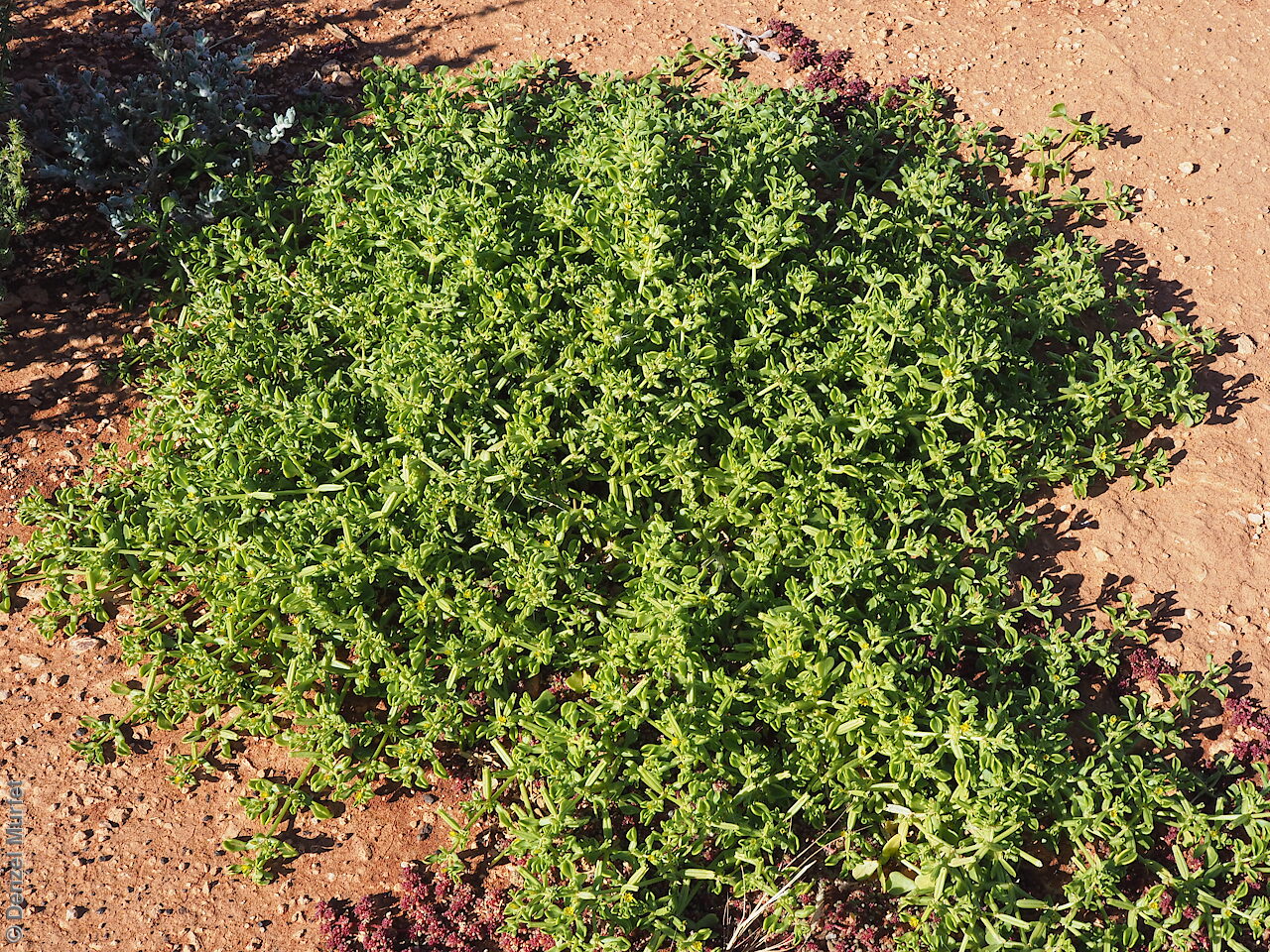
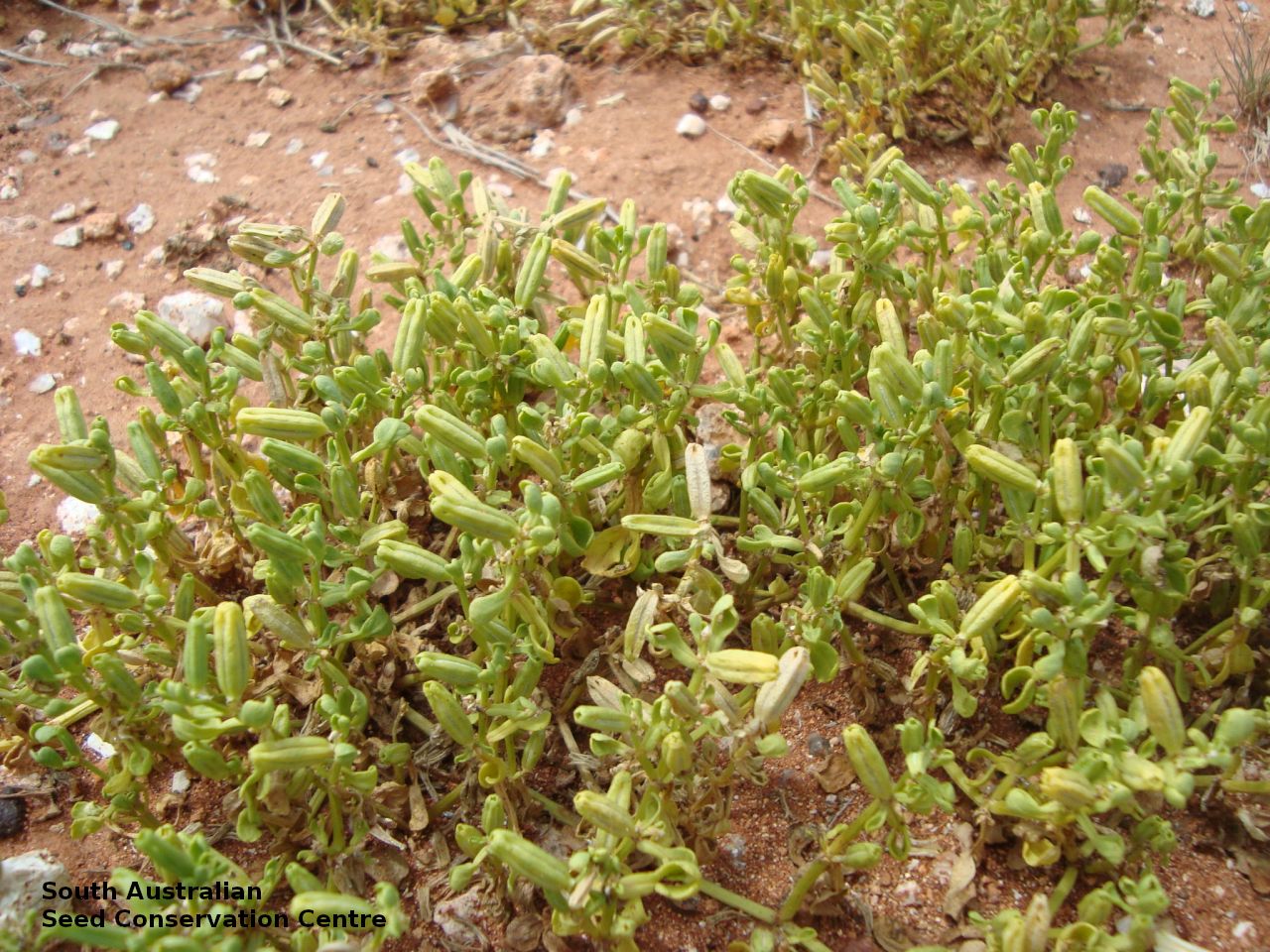
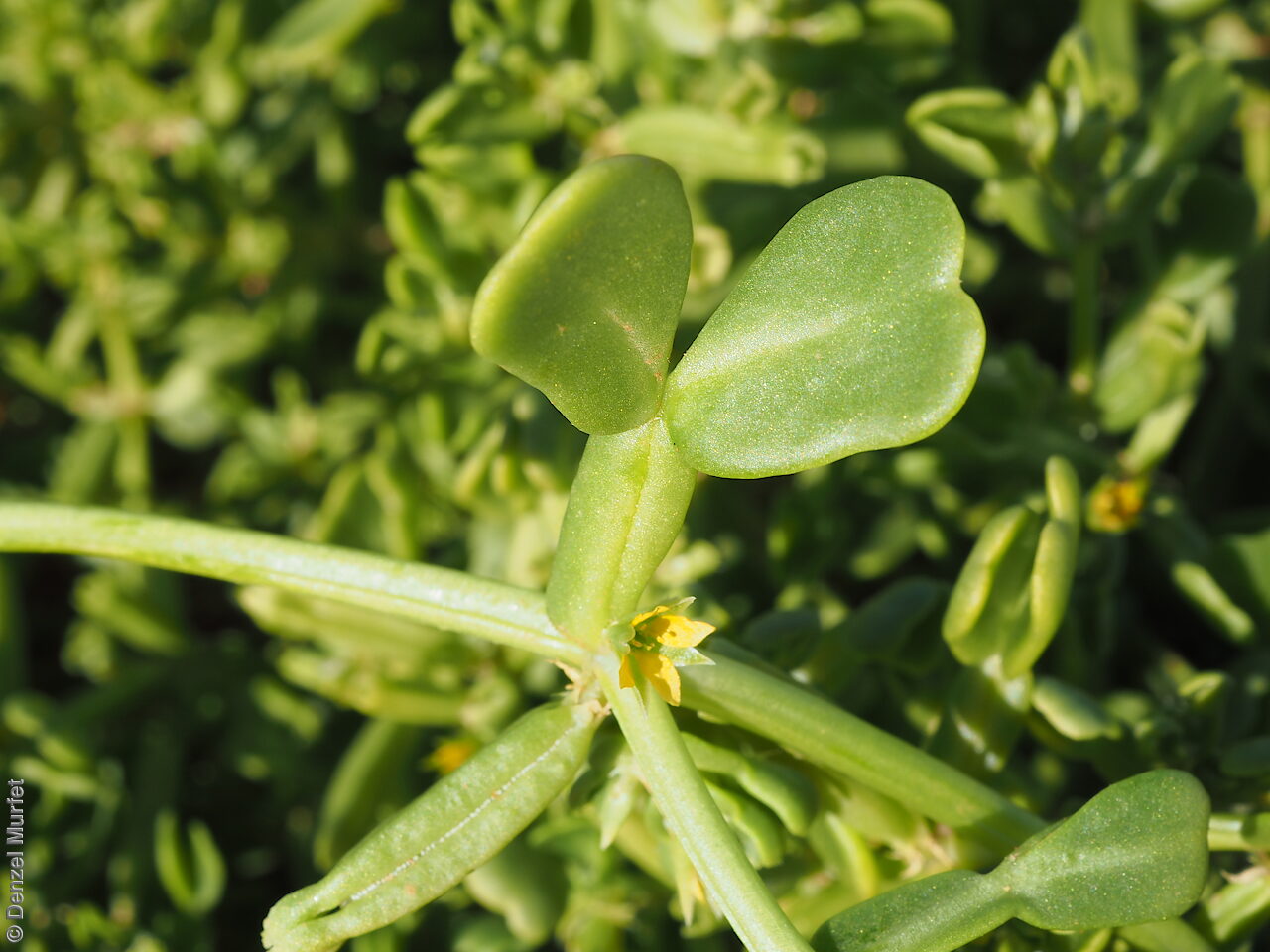
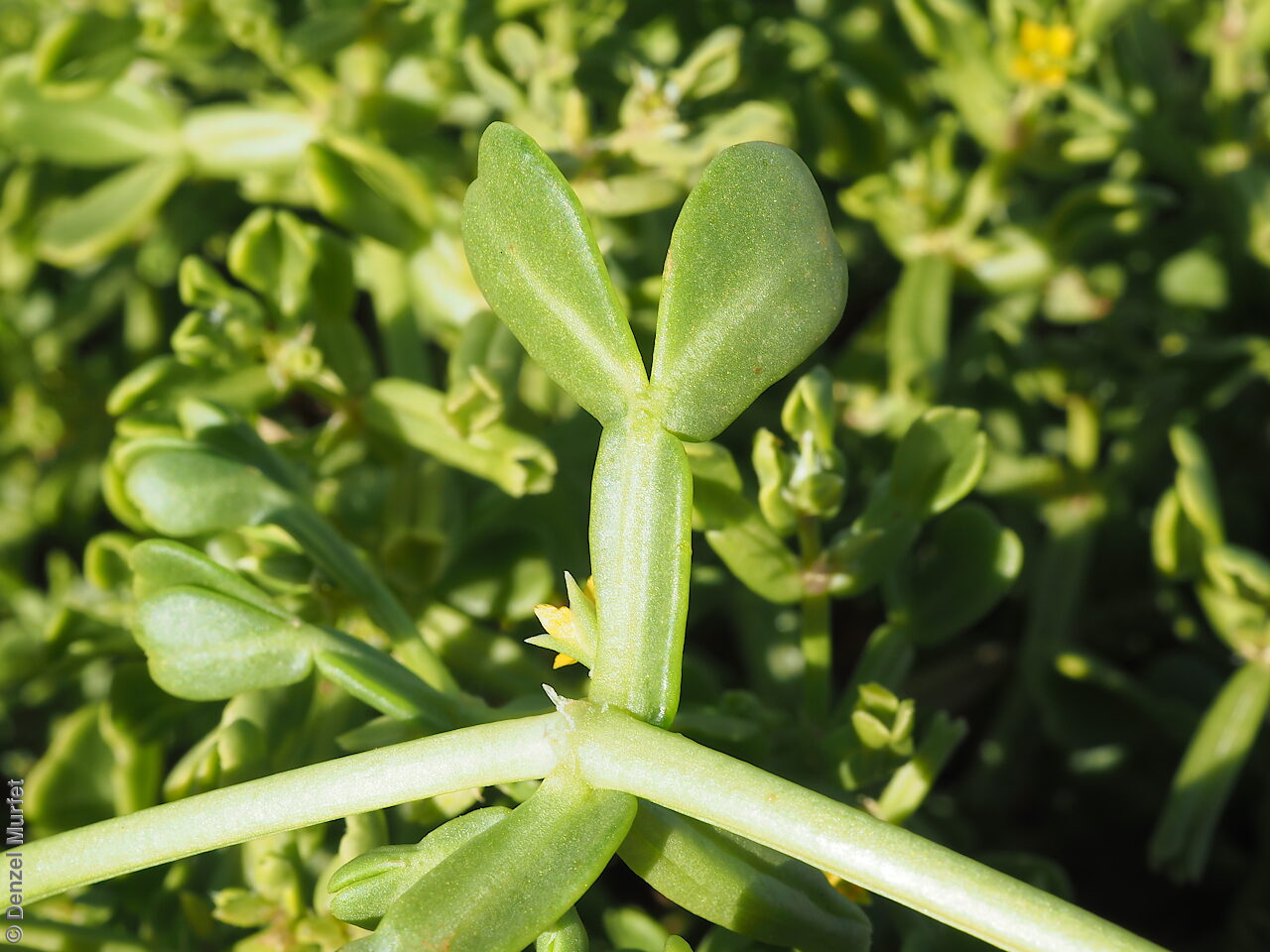

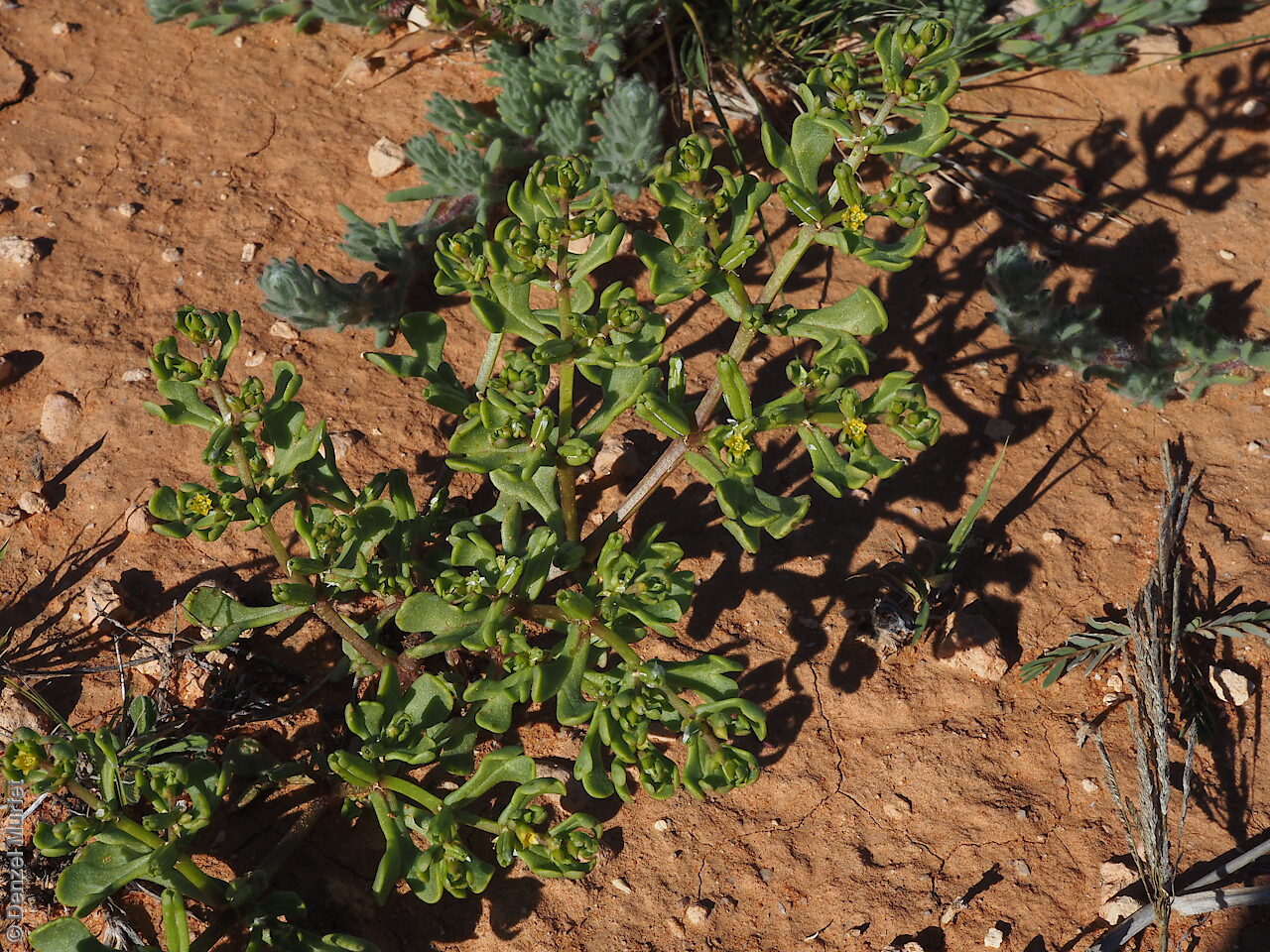
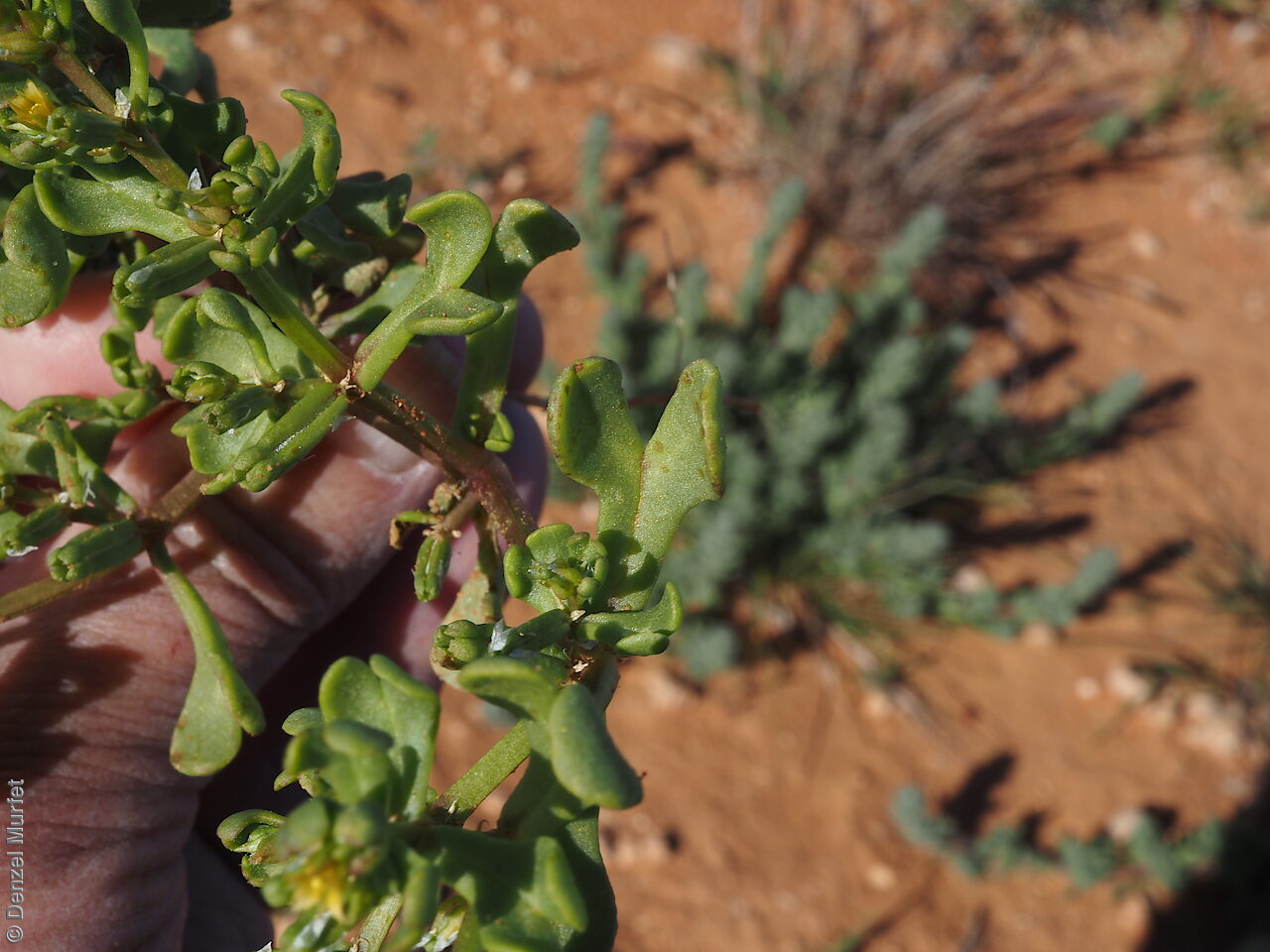
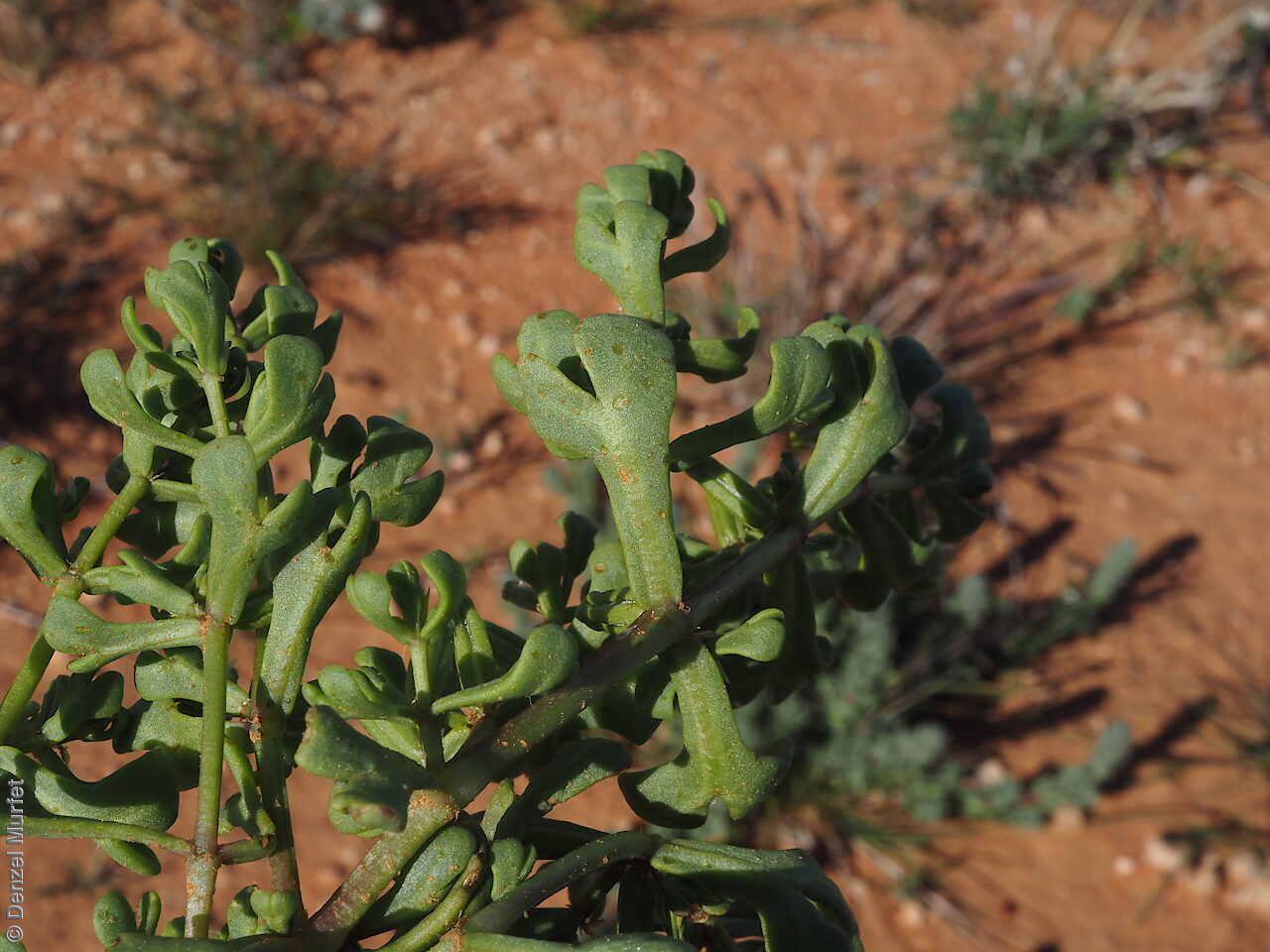
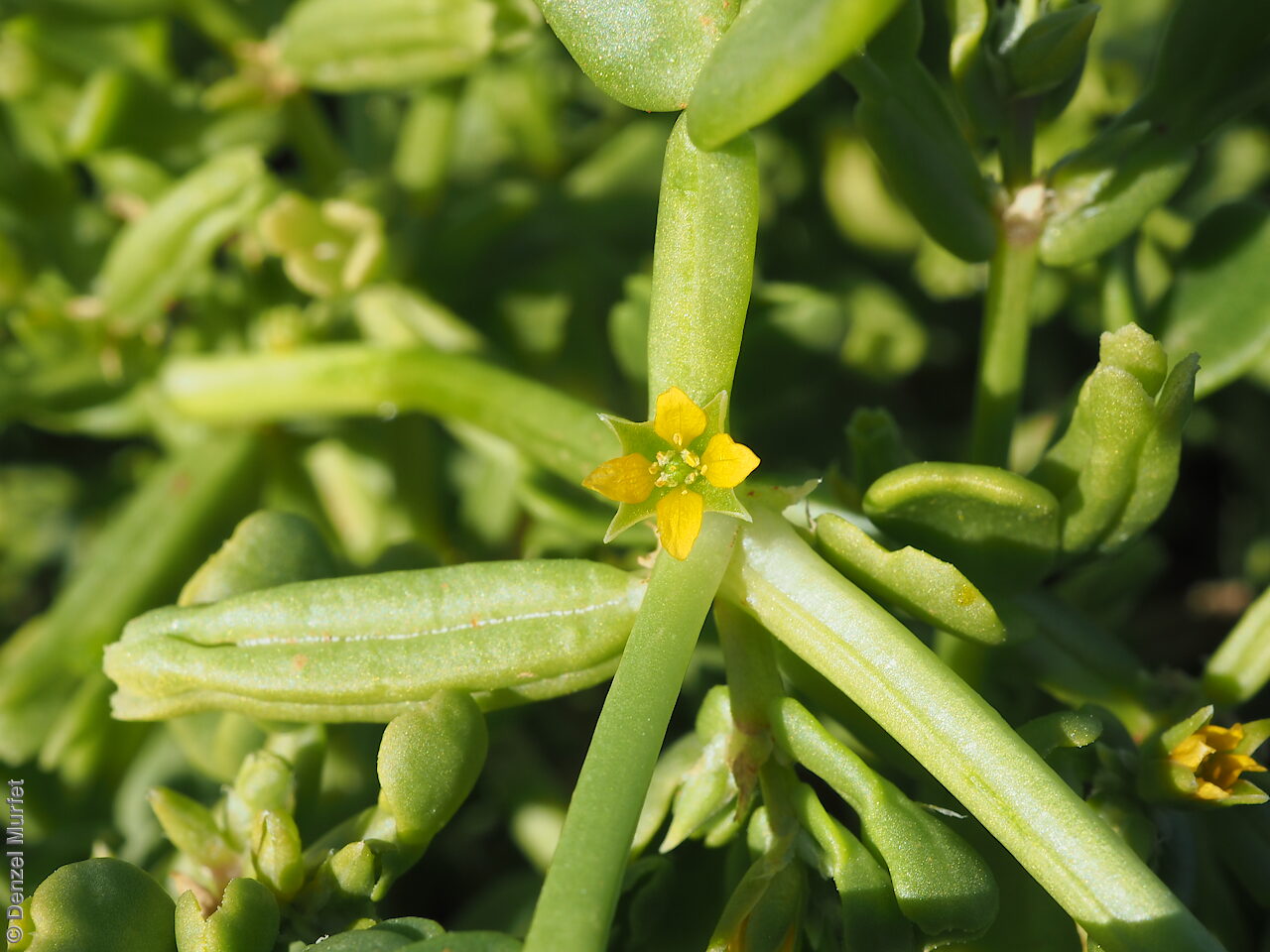
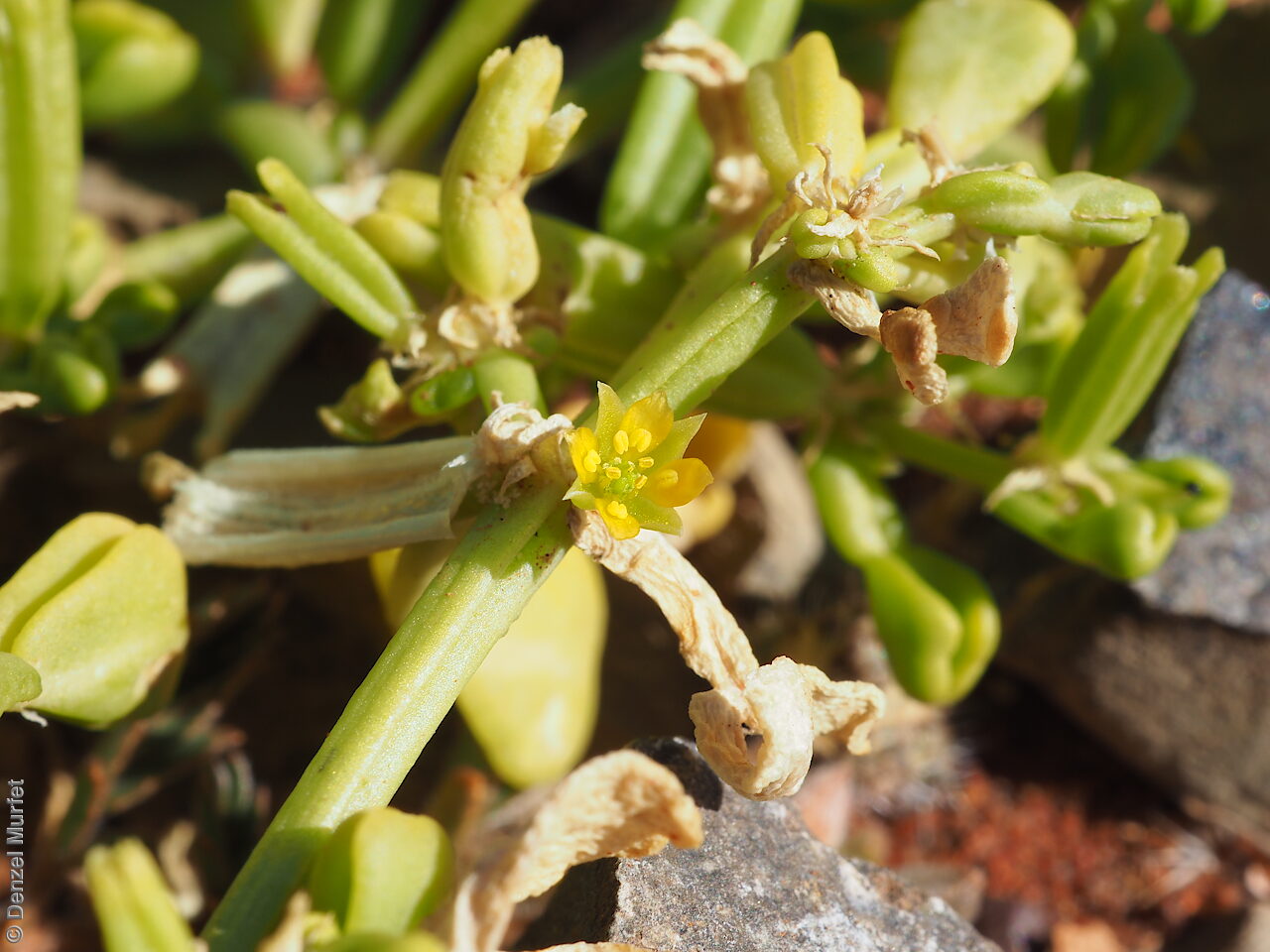
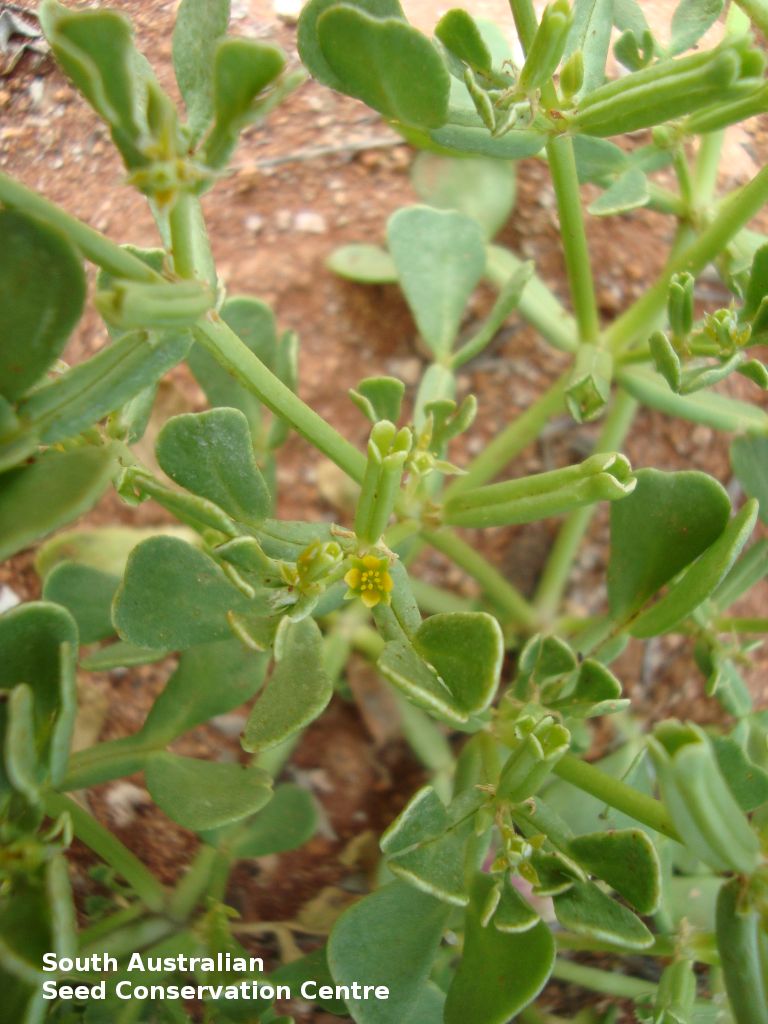
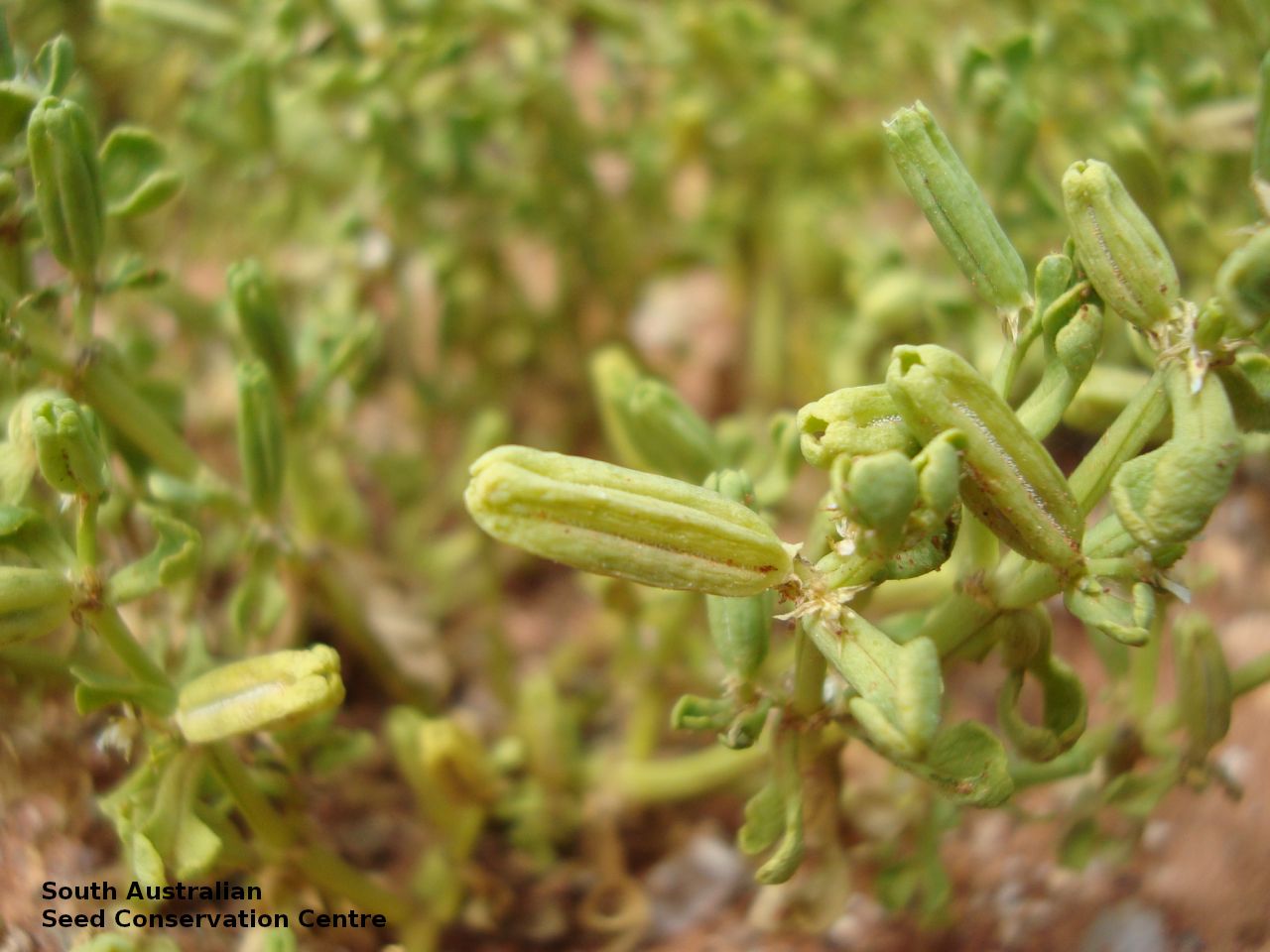
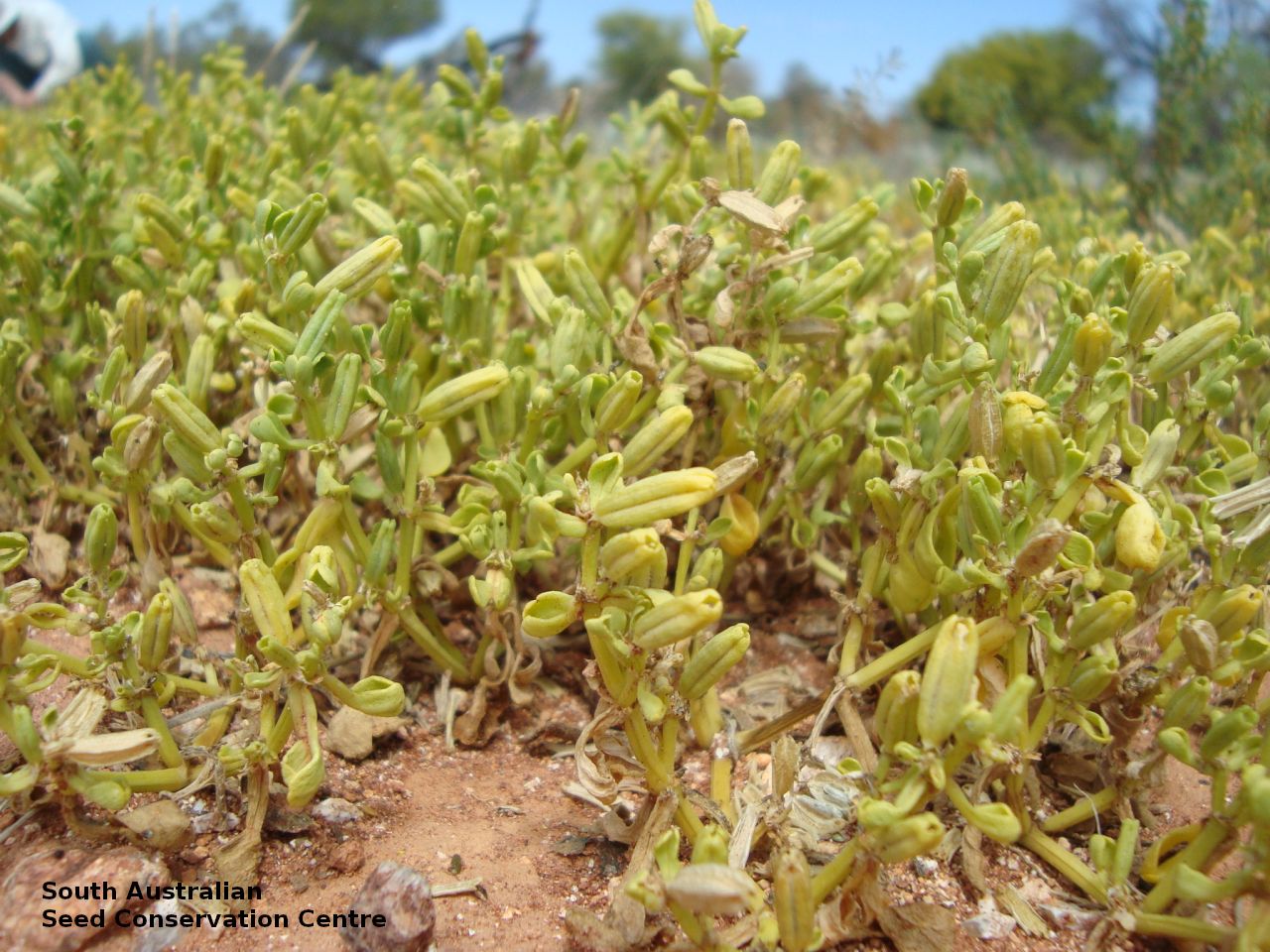
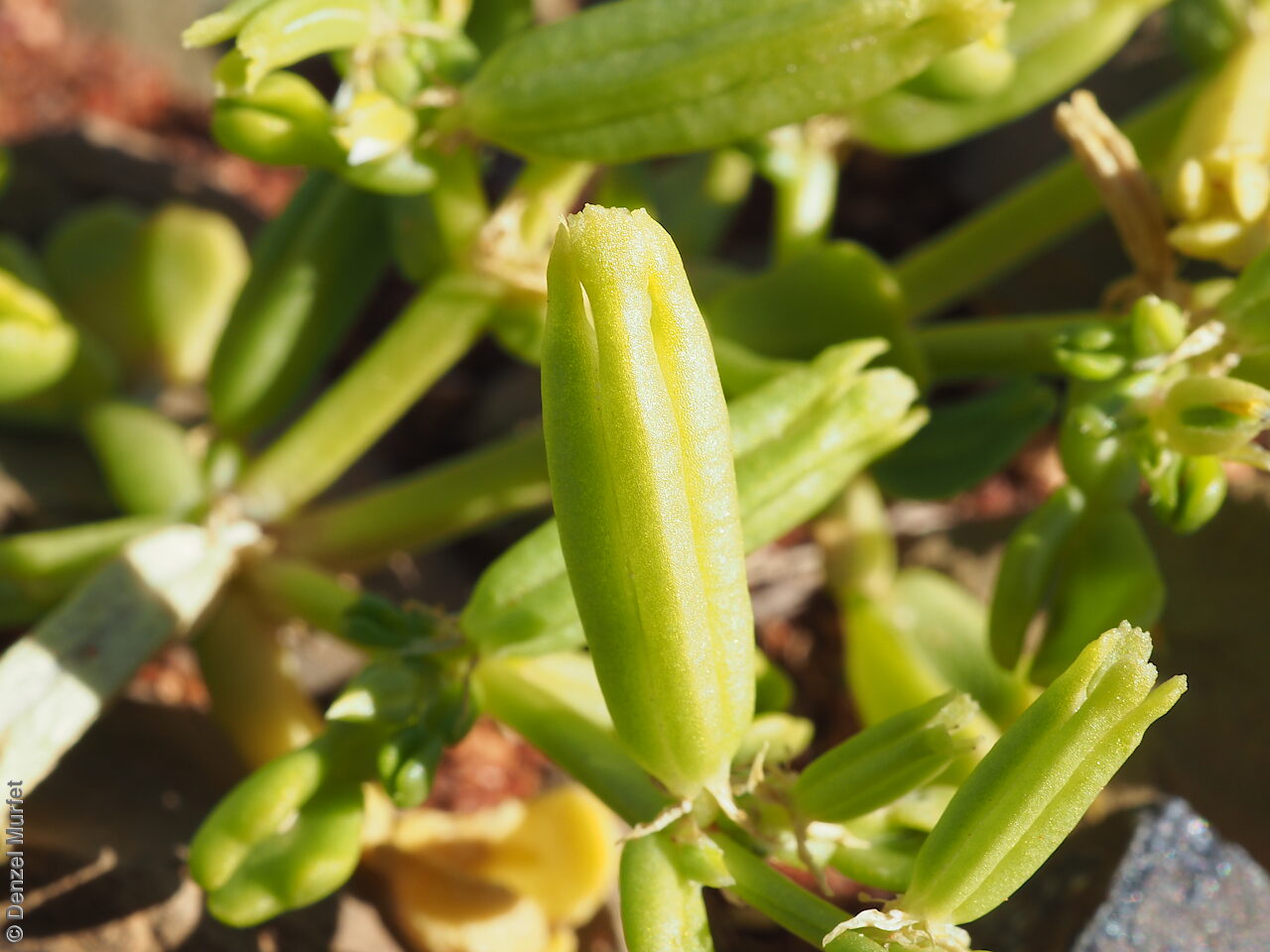
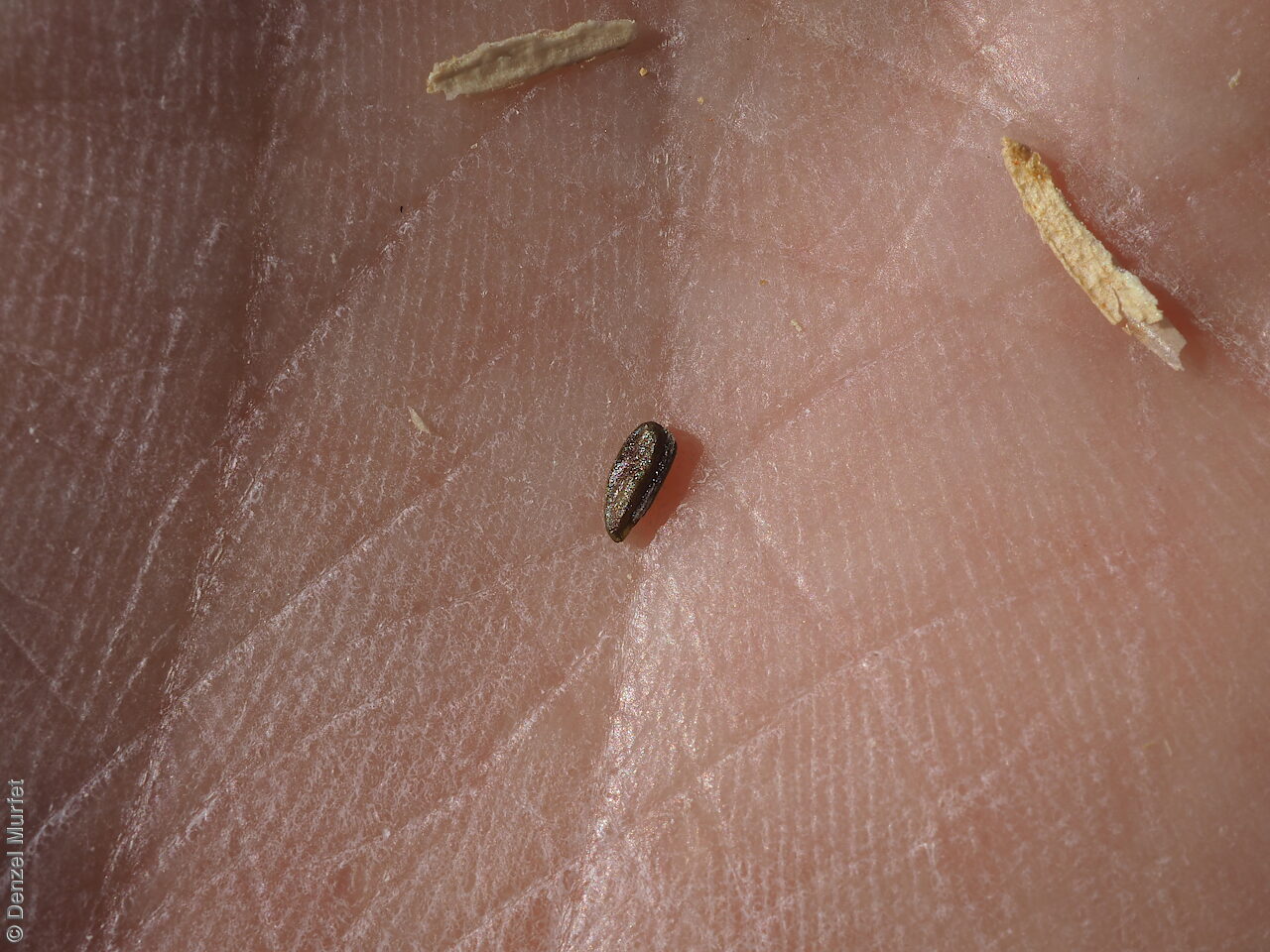

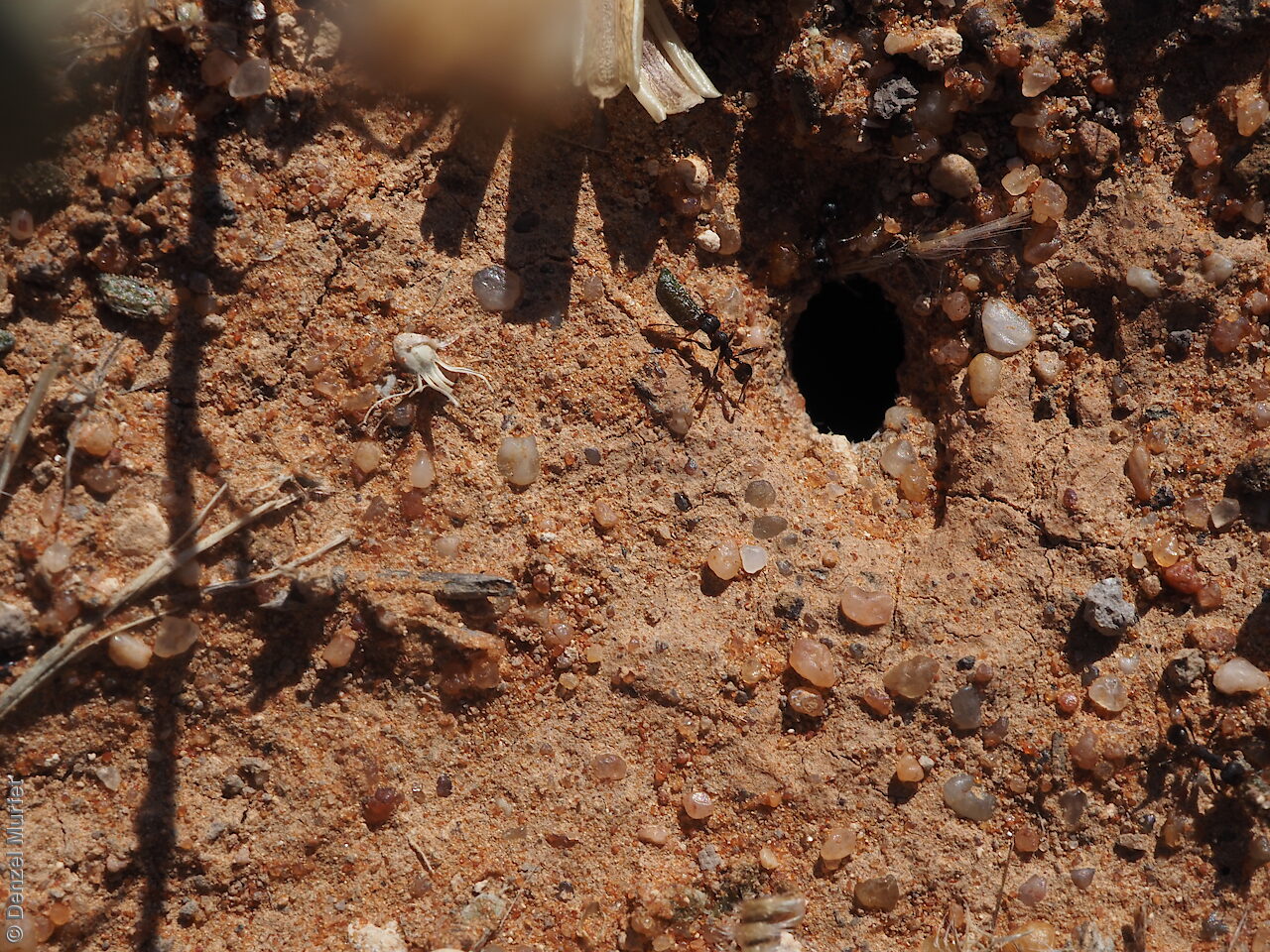
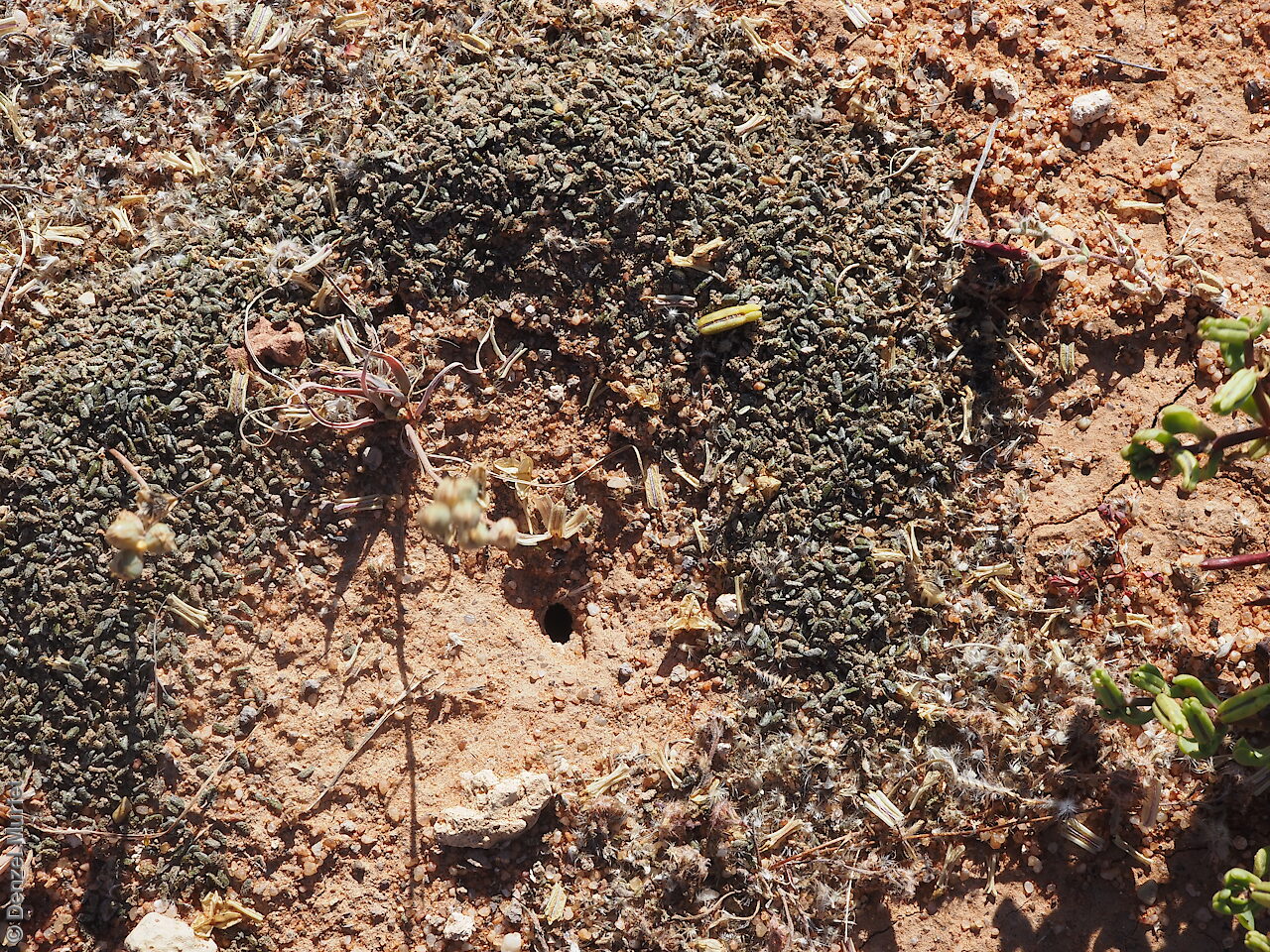
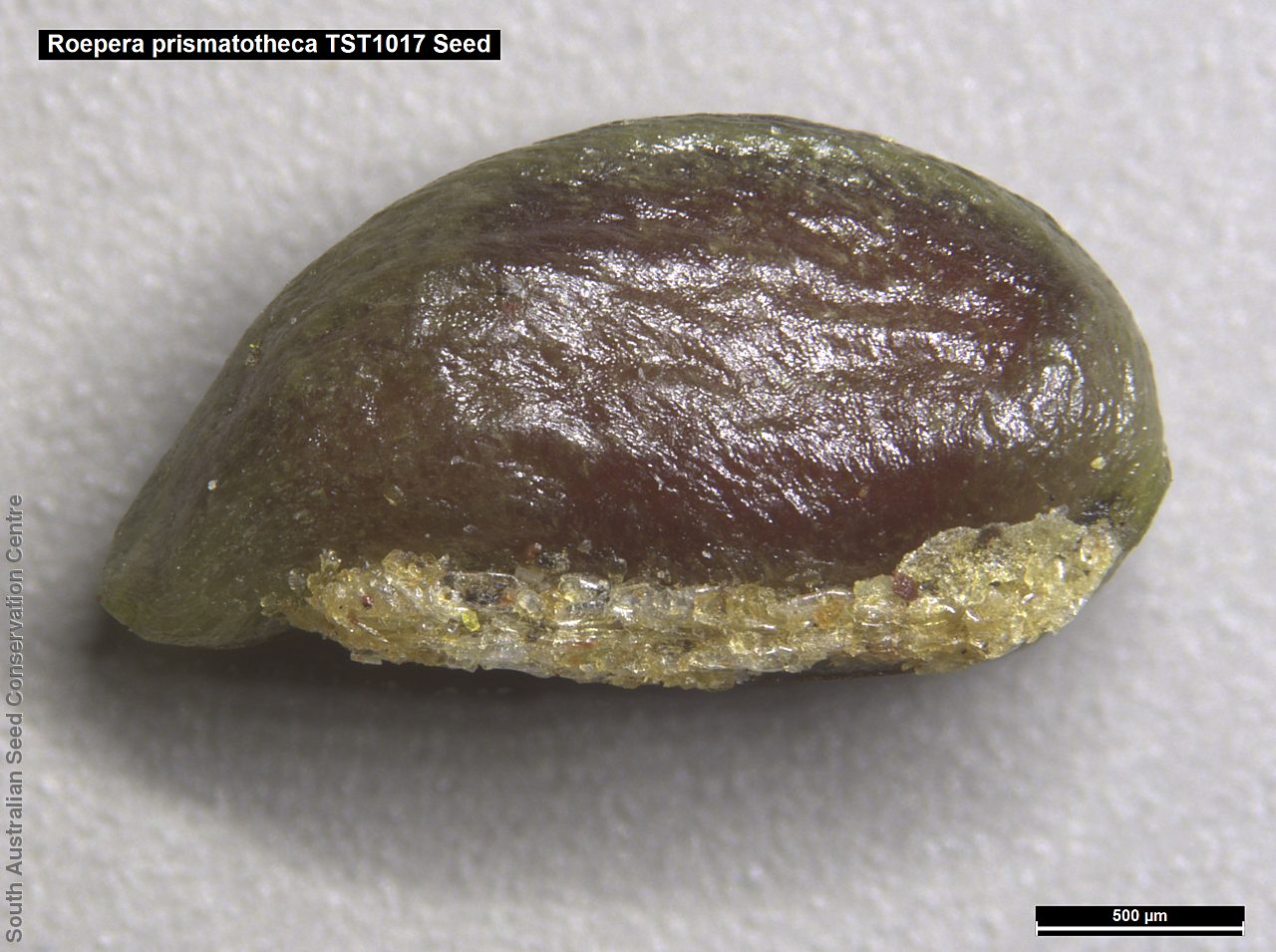
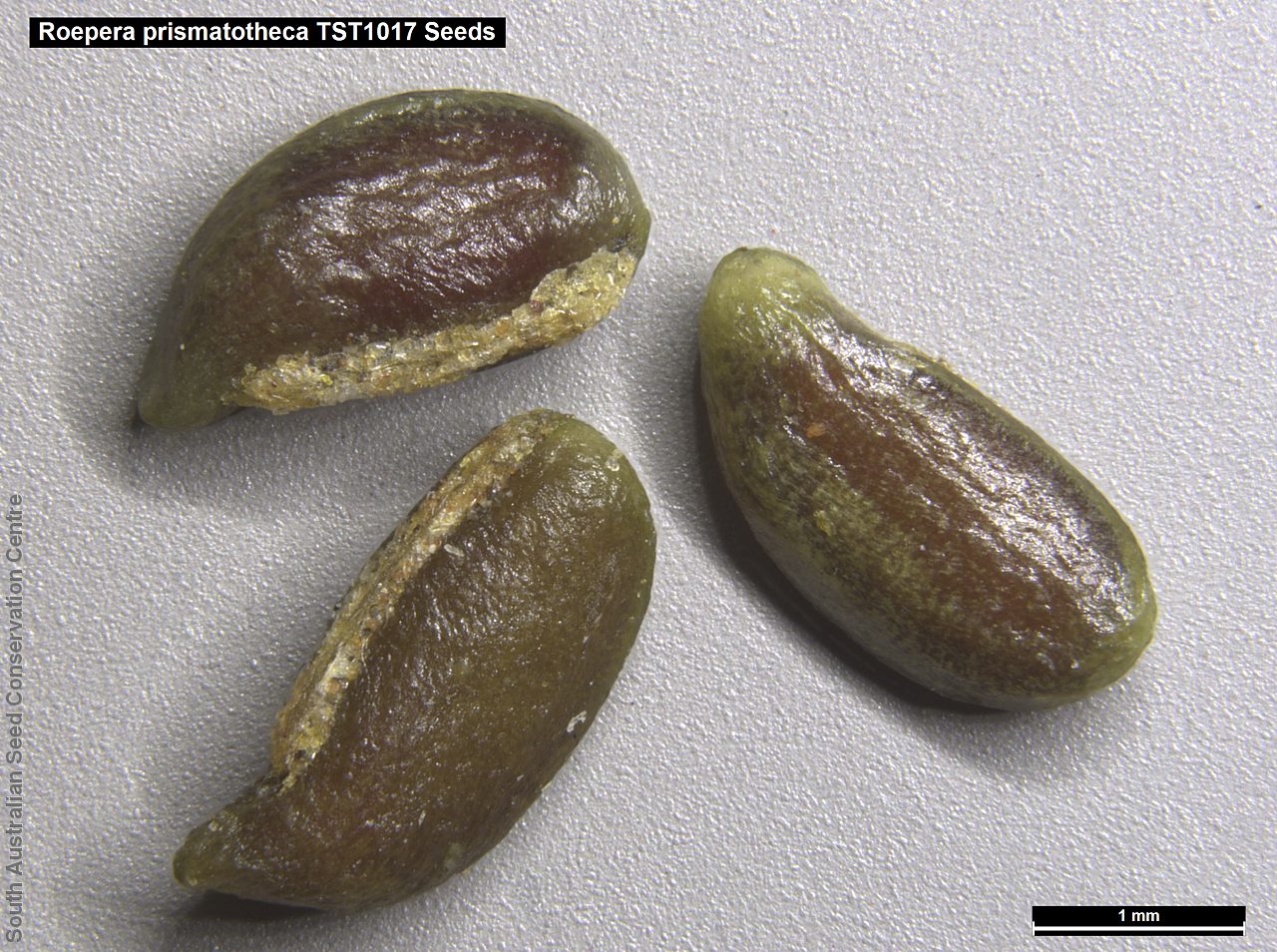

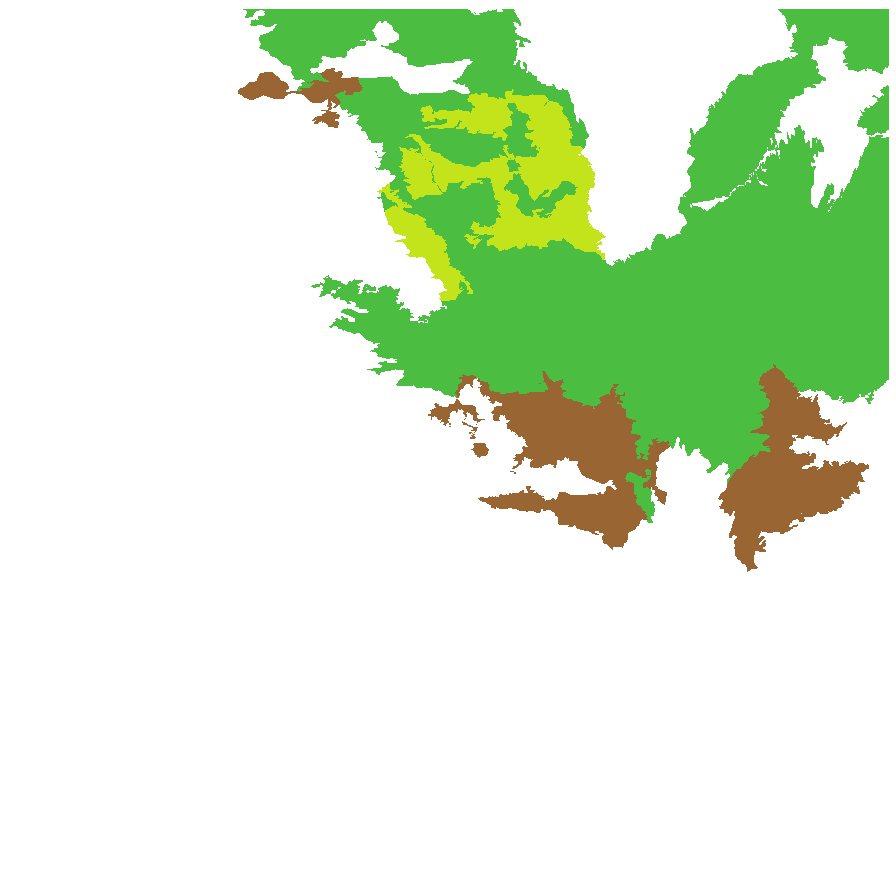
Botanical art
Prior names
Zygophyllum prismatothecum
Etymology
Roepera (formally Zygophyllum which is from the Greek 'zygon' meaning pair and 'phyllon' meaning leaf; referring to the pair of leaflets making up each leaf) is named after Johannes August Christian Roeper (1801 -1885), a German botanist and physician. Prismatotheca from Greek meaning prism-like or angular; referring to the fruit.
Distribution and status
Found in the north-eastern side in South Australia, growing on barren ground, often on salty brown gibber soil. Also found in the Northern Territory and New South Wales. Native. Common in South Australia. Uncommon in New South Wales. Common in the Northern Territory.
Herbarium regions: North Western, Lake Eyre, Gairdner-Torrens, Flinders Ranges, Eastern
NRM regions: Alinytjara Wilurara, South Australian Arid Lands
AVH map: SA distribution map (external link)
Plant description
Small spreading annual shrub. Leaflets cuneate, rounded at the apex, continuous with the cuneate petiole, forming an apically 2-lobed leaf. Flowers almost sessile, sepals 4, petals 4, oblanceolate, to 3 mm long, about as long as the sepals, more or less acute at the apex, yellow. Flowering between June and November. Fruits are stalk-less narrow-oblong capsule to 15 mm long, obtusely 4-angled, densely white hairs in the longitudinal grooves between the angles with seeds 2 or 3 in each cell. Seeds are brown ovoid to 3 mm long and 1.5 mm wide. Seed embryo type is spatulate fully developed.
Seed collection and propagation
Collect seeds between August and February. Collect semi-dried and dried capsules by running your hands through the stems of the plant. Mature fruits will come off easily and will have a hard and dark seed inside each segment. Place the capsules in a tray and leave to dry for 1 to 2 weeks, depending on how green the fruit is. Then rub the dried capsules to dislodge the seeds. Use a sieve to remove the unwanted material. Store the seeds with a desiccant such as dried silica beads or dry rice, in an air tight container in a cool and dry place. Seed viability is usually high.
| Location | No. of seeds (weight grams) | Number of plants | Date collected | Collection number Collection location | Date stored | % Viability | Storage temperature |
|---|---|---|---|---|---|---|---|
| BGA | 10,000 (17.74 g) | 100+ | 5-Oct-2010 | TST1017 Lake Eyre | 1-Jan-2012 | 100% | -18°C |
| BGA | 3,200 (5.46 g) | 200+ | 20-Aug-2010 | KHB455 Flinders Ranges | 1-Jan-2012 | 100% | -18°C |
Number of plants: This is the number of plants from which the seeds were collected.
Collection location: The Herbarium of South Australia's region name.
% Viability: Percentage of filled healthy seeds determined by a cut test or x-ray.